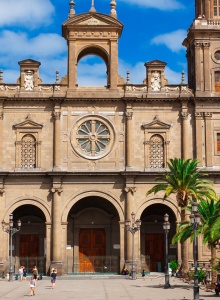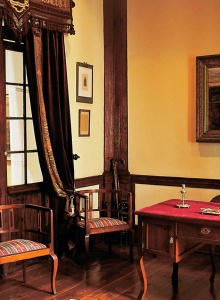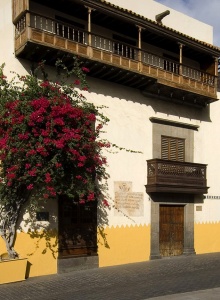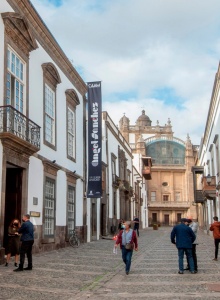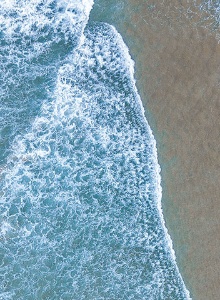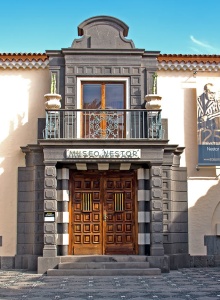Crowning an island of tall cliffs to the north and extensive beaches to the south, Las Palmas de Gran Canaria is a city which offers sun, sea and an exceptional historic legacy.
Mild temperatures throughout the year make for an enjoyable and racially diverse city. The combination of the aboriginal Guanche culture, its colonial past, and the fact that it is only 90 miles from the coast of Africa create a distinctive character resulting from the mix of Europe, America and Africa.
The capital of the eastern province of the Canary Islands is made up of two key points: Las Palmas de Gran Canaria and Puerto de la Luz. The palm trees, which grow everywhere on the island, add exoticism to an urban layout of cobbled streets. Meanwhile, the importance of Puerto de la Luz since the 19th century and its trade links with Great Britain mean the city preserves some beautiful modernist buildings.Cultural diversityThe historic neighbourhoods, belonging to the old city founded by the pioneer of the Catholic Monarchs Juan Rejón in 1478, are San Antonio, Vegueta and Triana. It was here where the first colonizers settled, giving the streets an atmosphere halfway between colonial and Andalusian. La Vegueta preserves colonial architecture from the 15th and 16th centuries in its beautiful courtyards and balconies.The most historic point is the square of Santa Ana. Beside it stands one of the city's greatest treasures: the Cathedral. The church has a mixture of styles which go from the Gothic to the Neoclassic, the result of a long period of construction. Its high altar and the treasures of its Diocesan Museum of Religious Art are outstanding.The House of Columbus is a must for those who what to learn more about the discovery of America. It is a former palace of the governors of the island which was used by Christopher Columbus as a residence during his stay on Gran Canary. Its buildings house a museum devoted to Columbus: maps, models and fragments of his diaries...To continue exploring the island's culture there is another compulsory landmark: The Canary Island Museum. Housed here are significant remains of the Guanche culture, the Canary Island's settlers in pre-Columbian times. Its collection is of great archaeological and anthropological value. Another cultural opportunity is provided by the Atlantic Centre of Modern Art (CAAM), which awaits to show us the most avant-garde exhibitions.In the likewise old neighbourhood of Triana, nearer the sea, we can visit the Literary Museum, declared to be Historic-Artistic Heritage; and thePérez Galdós Theatre, decorated with modernist paintings. On these streets you can also visit the author's House Museum..On the way down to the coast towards Puerto de la Luz and la Isleta (the city's other centre), we enter the modern town. First you must go by calle Triana: pedestrianized and one of the best places on the island for shopping. Almost on the boundary of Ciudad Jardín –a residential area made up of buildings of the most diverse styles-, we come to the biggest green area in Las Palmas de Gran Canaria. The Rubio and Dorama Gardens house the Zoo and the Canary Islands Village. From here, we can climb uphill towards the neighbourhood of Altavista, where we can get one of the best views of the surrounding landscape.And we come to Puerto de la Luz. Built in the 19th century, it marks the start of the more summer area. The port and the beach of Alcaravaneras are the two key points. Two of the best places to enjoy the Canaries nightlife. Here the land narrows into a point behind which is la Isleta. The isthmus, strictly speaking, is the neighbourhood of Santa Catalina, where some of the best restaurants are gathered for you to enjoy the tastiest fish and the most exotic fruit, typical of this tropical climate. On one side is the Wharf, while on the other are the golden sands of Playa de las Canteras.And then we come to la Isleta, a seafaring and military neighbourhood which still has a few surprises in store for us. The Port has marked the place names: the Hermitage of la Luz and the Castle of la Luz. The castle was the first fortress to be built on the island in the times of the conquest, although today it has left its defensive origins to one side and hosts all manner of cultural activities. And, among these modern walks and housing developments, we find the Port Market. It has a wrought iron structure and a modernist style which reminds us we are in an old fishing port.Gran CanaryLas Palmas de Gran Canaria is a perfect place for visiting the entire island. More than 200 kilometres of coastline are at the visitor's disposal offering cliffs which plunge into the sea and beaches like that of San Agustín, Playa del Inglés or Maspalomas, which are only an example. Places to do water sports and sports on dry land, such as golf. Children will also enjoy the facilities on the island: a water park, go-kart circuit, amusement park, mini-train or a camel safari are just some of the possibilities for kids.Nature lovers have the chance to see very diverse ecosystems within a short distance of one another. The volcanic origins of the island make it possible to see craters and volcanic cones. The subtropical climate has created a striking wealth of fauna and flora. But to the south, all which was lushness becomes a desert of dunes, more typical of a semi-arid climate. The landscape continues to surprise us with the forests of Terciario, rocks, natural dams and ravines.The villages, towns and cities, meanwhile, take us back to a colonial period, both inland and on the coast. Gáldar, Arucas, or Telde are some of the most interesting. Any of these places offers us a richly-laid dinner table based on Canary Islands cuisine. Vegetable stew, marinated tuna, a spicy Spanish sausage similar to Majorcan sausage and sweet black pudding (with raisins and almonds) are just some of the region's specialities. Not forgetting the fact that we are in an area with a subtropical climate, which provides avocodo, mango and vegetables, generally speaking, all year round. Among the desserts, marzipan is the most famous. The Designation of Origin Gran Canaria wines are a good choice to accompany any meal.


